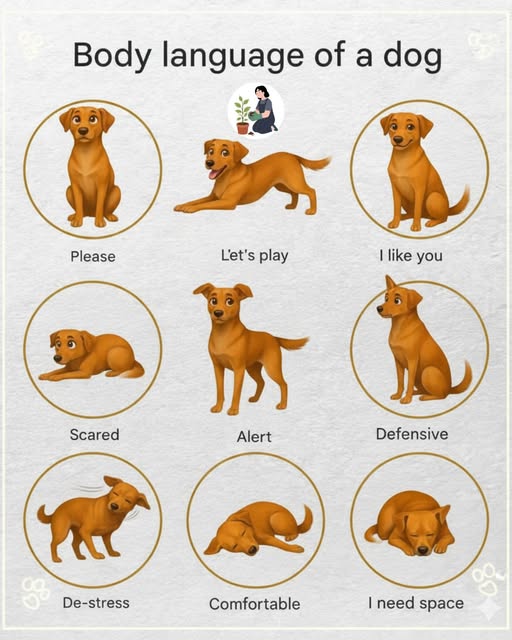![]() Dog Body Language: What the Signals Really Mean
Dog Body Language: What the Signals Really Mean
Understanding your dog’s body language helps you avoid misunderstandings and build a stronger bond. This quick guide shows you how to read the signals your dog gives every day.
![]() What You Need
What You Need
Nothing specialized — just:
Good lighting (or natural light) to observe clearly
A calm space so your dog isn’t distracted
Optional:
A treat to keep your dog nearby
A notebook/phone notes if you want to track behaviors
![]() Step-by-Step: How to Read Your Dog’s Signals
Step-by-Step: How to Read Your Dog’s Signals
Start with the tail:
Loose wagging = friendly/excited
Stiff/high tail = alert or uneasy
Low tucked tail = scared or insecure
Check the ears:
Relaxed & natural = calm
Forward = curious or alert
Pinned back = stress, fear, or uncertainty
Watch the eyes:
Soft blinking = relaxed
Wide eyes/whale eye (seeing the whites) = discomfort
Hard staring = warning or guarding
Look at the mouth:
Slight open mouth/panting = comfortable
Closed tight mouth = stress building
Lips pulled back/showing teeth = fear or warning
Observe the body stance:
Loose body = friendly
Leaning forward = excitement or alertness
Crouched/low body = fear or anxiety
Notice overall movement:
Bouncy/loose = playful
Frozen/stiff = discomfort or potential aggression
![]() Extra Tips
Extra Tips
Always read the whole body, not one signal alone.
Compare signals to your dog’s normal behavior — every dog is unique.
Write down what you notice during walks or play to see patterns.
Use these observations when introducing new people, pets, or environments to keep things safe and comfortable.

